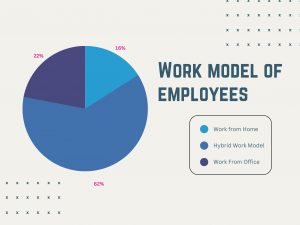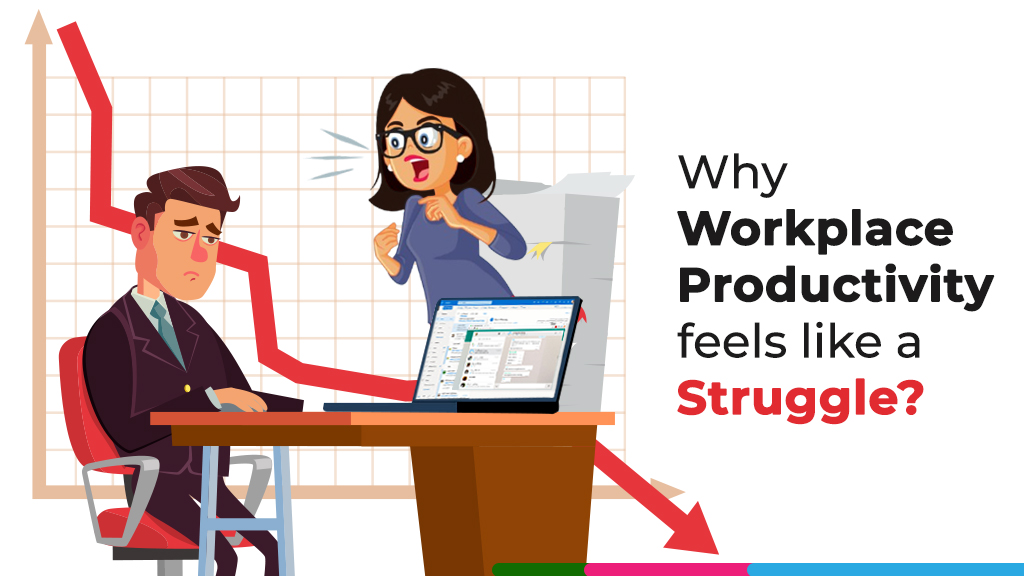Covid-19 caused unprecedented turbulence that no one was prepared for. Especially in the business sector, pandemic lockdowns turned organizational structures upside down. Being an entrepreneur, I too felt the effect of pandemic on my business and the urgent need to take strategic measures that could ensure its seamless operations. The advent of the ‘Work from Home’ model implementation was a great breakthrough in the contemporary work setup. While the virtual workplace culture became the low-hanging fruit during the pandemic, it posed several challenges for both employers and employees in its smooth execution, like proper infrastructure setup and maintaining optimum productivity and security.
As the lockdowns were eased and employees started attending offices on some days of the week, an accentuated work model was required to take the charge. By the end of 2021 most business sectors particularly with large contingent of white collar workers had seen a paradigm shift in their working model with remote working being the norm and occasional office visits for meeting and brainstorming being the exception. In our case as I write this blog that percentage is as high as 95% remote workers and less than 5% regularly working from office.
Several surveys state that there was a rapid increase in the number of hybrid-working employees looking for flexible work arrangements, from 13% to 24% in just four months of 2022. Furthermore, 84% of the workforce who were working remotely during the pandemic are now more comfortable working under the hybrid model.
According to a recent study, 63% of the high-growth firms preferred the ‘Productivity everywhere’ model. Moreover, 85% of the working staff stated that they can be effective anywhere and intend to remain with their current employer if they provided flexible work arrangements.

Source: Owl Labs
The above facts and figures indicate that employees are more inclined towards working under the hybrid model. Understanding the same, we have pulled out all the stops in providing a productive and safe working environment to our employees.
However, the remote and hybrid work model induced the onboarding of employees from different geographical locations and it became inevitable to implement a robust Diversity and Inclusion model in the evolved boundary less, virtual workplace.
Diversity & Inclusion in the Boundary less Workplace
A boundary less workplace refers to an organization that transcends traditional hierarchical structures and physical boundaries to foster collaboration, innovation, and agility. An inclusive workplace ensures that our entire workforce feels valued, respected, and supported regardless of their backgrounds.
I believe that when an organization embraces diversity and promotes inclusivity, it can leverage the unique strengths, perspectives, and experiences of its employees to drive innovation, creativity, and growth. And, organizations that lack these practices often struggle to build trust and create a sense of belonging among their employees. This can lead to misunderstandings, conflicts, and decreased productivity.
To foster diversity and inclusion in our boundaryless workplace, we went the extra mile to establish clear diversity and inclusion policies and goals that align with our organization’s mission and values. We thrived on:
-
-
- Providing training and resources to help employees understand and respect different perspectives and cultural backgrounds
- Creating a culture of openness and transparency, where employees are encouraged to speak up and share their ideas and concerns
- Building diverse teams that bring together individuals with different backgrounds, skills, and experiences
- Encouraging employees to embrace flexibility and adaptability, (for example, promoting flexible work arrangements) which are essential qualities in a boundaryless workplace
- Celebrating diversity and recognizing the contributions of all employees, regardless of their backgrounds
-
Overall, a diverse and inclusive workplace is critical for success in a boundaryless workplace, where collaboration, communication, and innovation are essential. By promoting diversity and inclusivity, we envisioned fostering a culture of trust, respect, and belonging that enabled our employees to work together effectively and achieve their goals.
Decentralized Global Workforce and Larger Talent Pool
To accentuate the hybrid work model, a model that is distributed across multiple locations around the world and operates independently from a centralized headquarters was required. That is when the decentralized global workforce model stepped in.
It offered significant benefits to us and other organizations as they could acquire talent from around the world, while improving their diversity, flexibility, scalability, and competitiveness, ultimately leading to greater success and growth.
With a global workforce collaborating in a virtual workplace, corporates can tap into a broader range of talent from different countries, cultures, and backgrounds. This enables them to find the best fit for specific roles, regardless of location.
Additionally, a decentralized global workforce increases flexibility and agility. With employees located around the world, organizations can operate around the clock, taking advantage of different time zones and accommodating different work styles. This can lead to faster turnaround times, increased productivity, and improved customer service.
However, managing a decentralized global workforce can pose certain challenges to employers. For example, communication can be more complex due to language barriers, cultural differences, and geographic distances. It can also be challenging to build a cohesive organizational culture when employees are spread across different locations.
Technology – a cornerstone of the evolved working model
Undoubtedly, technology has played a significant role in enabling a smooth transition to a decentralized global workforce. Advances in digital communication tools, collaboration platforms, and cloud-based software have made it easier than ever before for employees to work together from different locations and time zones.
One of the most significant contributions of technology is the rise of video conferencing and online collaboration tools. These tools allow teams to communicate face-to-face in real time, regardless of their location. Video conferencing has significantly reduced the need for travel, in turn, saving time and money for organizations. Cloud-based tools like project management software, document-sharing platforms, and customer relationship management systems can be accessed from anywhere with an internet connection. This enables teams to collaborate on projects in a virtual workplace and access critical information regardless of their physical location.
Another way technology has facilitated a smooth transition is by providing remote access to company resources. Virtual private networks (VPNs) and other remote access tools allow employees to securely access company networks and data from anywhere in the world. This eliminates the need for employees to be physically present in the office to access critical systems and resources.
All in all, technology has played a critical role in enabling a smooth transition to a decentralized global workforce. By providing digital communication tools, collaboration platforms, cloud-based software, and remote access to company resources, technology has made it easier for employees to work together from different locations and time zones, increasing productivity and efficiency for organizations.
Final Words
The virtual workplace culture has gained significant momentum in recent years and is likely to continue to grow in the future. With the increasing availability of technological tools and the changing attitude towards remote work, more and more employers are in the race to adopt a decentralized global workforce.
I agree that this new model of work presents its own set of challenges, such as communication barriers, data security risks, and the need for effective management. But you cannot ignore the benefits of a virtual workplace culture, including increased flexibility, access to a larger talent pool, and improved productivity. As the world becomes increasingly interconnected, it is likely that boundary less workspaces with flexible work arrangements will become the norm rather than the exception, requiring organizations to continue to adapt to this new reality.







